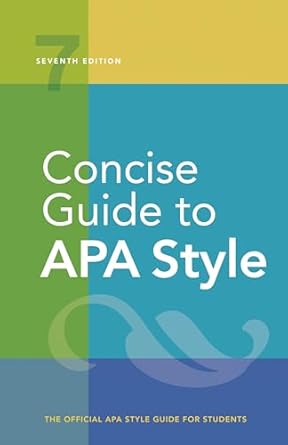[toc]
mastering abbreviations a guide for clear writing
Concise Guide to APA Style: 7th Edition (OFFICIAL)
Page 136 Review
The Importance of Clear Abbreviations in Academic Writing: A Commentary
This ebook excerpt focuses on the crucial role of abbreviations in academic writing, emphasizing clarity and consistency.
The excerpt provides a comprehensive guide on how to properly introduce and use abbreviations, covering various scenarios within the text, tables, and figures.
Let’s delve into the key aspects highlighted in this section.
Defining Abbreviations in Text
The core principle is to define an abbreviation the first time it’s used.
As the excerpt states: “When you first use a term that you want to abbreviate in the text, present both the full version of the term and the abbreviation.” This ensures that the reader understands the meaning of the abbreviation from the outset.
For instance, the excerpt exemplifies this with “attention-deficit/hyperactivity disorder (ADHD).”
Abbreviations in Headings
The rules for headings are slightly different. “When the full version of a term appears for the first time in a heading, do not define the abbreviation in the heading; instead, define the abbreviation when the full version next appears.” This prevents cluttering headings and maintains readability.
The exception, of course, is when the abbreviation is a widely recognized term already present in a dictionary.
In those cases, it is perfectly acceptable to use the abbreviation directly.
Parenthetical Text and Citations
The excerpt also clarifies the proper use of abbreviations within parenthetical text and with citations. “When the full version of a term first appears in parenthetical text, place the abbreviation in square brackets after it.
Do not use nested parentheses.” The use of square brackets helps distinguish the abbreviation from the surrounding text.
The excerpt demonstrates: “(i.e., attention-deficit/hyperactivity disorder [ADHD])”
When a citation is needed alongside an abbreviation, the excerpt stresses the importance of avoiding nested parentheses. “If a citation accompanies an abbreviation, include the citation after the abbreviation, separated with a semicolon.
Do not use nested or back-to-back parentheses.” An example is provided: “Beck Depression Inventory-II (BDI-Il; Beck et al., 1996)” .
This method maintains clarity and avoids confusion for the reader.
Defining Abbreviations in Tables and Figures
The excerpt emphasizes the independence of tables and figures from the main text. “Define abbreviations used in tables and figures within each table and figure, even if the abbreviations have already been defined in the text.” This means that even if an abbreviation has been previously defined in the document, it must be redefined within each table and figure where it appears.
As stated, “If an abbreviation is used in multiple tables and figures, define it in each table or figure.” This reinforces understanding and prevents ambiguity, allowing readers to interpret each visual element independently.
Abbreviations can be defined within the table or figure title or in a general note or legend.
However, the excerpt also includes this caveat: “Do not define abbreviations that do not appear in a table or figure.” This prevents unnecessary clutter and focuses on the abbreviations relevant to that specific visual element.
Furthermore, standard abbreviations for units of measurement and statistics are exempt from this rule, as they are generally understood.
Formatting Plural Forms
Finally, the excerpt touches upon the formation of plural abbreviations: “To form the plural of most abbreviations and statistical symbols, add a lowercase “s” alone, without an apostrophe.” This simple rule ensures consistency in the presentation of plural abbreviations and avoids common grammatical errors.
Why is this important?
The guidelines presented ensure a seamless and understandable reading experience.
By consistently defining abbreviations, avoiding nested parentheses, and maintaining clarity in tables and figures, the document becomes more accessible and professional.
Neglecting these rules can lead to confusion, misinterpretation, and ultimately, a decrease in the credibility of the work.
In conclusion, the excerpt provides a valuable resource for anyone involved in academic or technical writing.
By adhering to these guidelines, authors can enhance the clarity and professionalism of their work, ensuring that their message is effectively communicated to the audience.
Buy full ebook for only $18: https://www.lulu.com/shop/american-psychological-association/concise-guide-to-apa-style-7th-edition-official/ebook/product-rmzpq54.html?page=1&pageSize=4
Mastering Abbreviations A Guide For Clear Writing
Read more: Addressing Intersectionality: Research Guide


Leave a Reply